
Question and Answers Forum
Question Number 82057 by ajfour last updated on 17/Feb/20
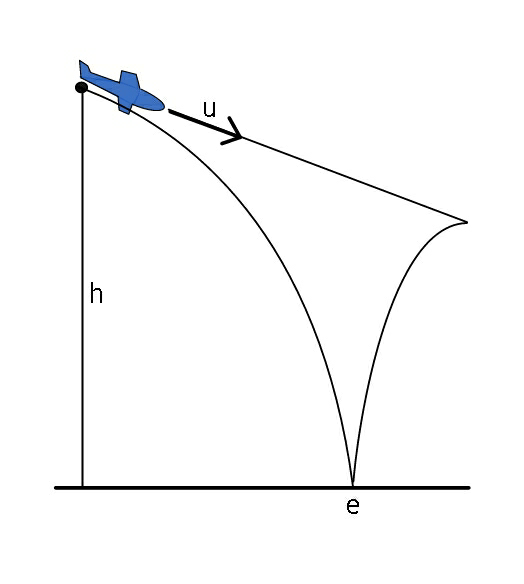
Commented by ajfour last updated on 17/Feb/20
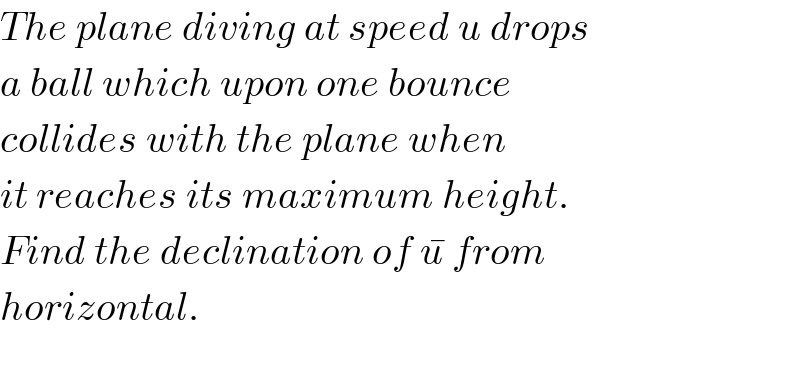
Answered by mr W last updated on 18/Feb/20
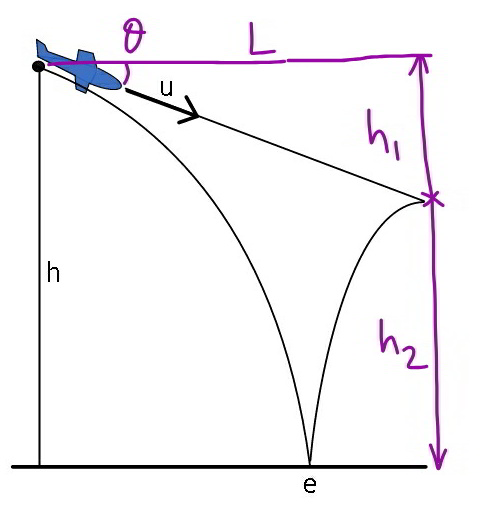
Commented by mr W last updated on 18/Feb/20
![e(√(2gh+(u sin θ)^2 ))=(√(2gh_2 )) ⇒h_2 =e^2 (1+((u^2 sin^2 θ)/(2gh)))h t=(((√(u^2 sin^2 θ+2gh))−u sin θ+(√(2gh_2 )))/g) t=(L/(u cos θ))=(h_1 /(tan θ u cos θ))=((h−h_2 )/(u sin θ)) ⇒L=(1/(tan θ))(1−e^2 −((e^2 u^2 sin^2 θ)/(2gh)))h (((√(u^2 sin^2 θ+2gh))−u sin θ+(√(2gh_2 )))/g)=(h/(u sin θ))−(h_2 /(u sin θ)) (√(u^2 sin^2 θ+2gh))−u sin θ+(√(2ghe^2 (1+((u^2 sin^2 θ)/(2gh)))))=((gh)/(u sin θ))−((gh)/(u sin θ))e^2 (1+((u^2 sin^2 θ)/(2gh))) (1+e)(√(u^2 sin^2 θ+2gh))=(((1−e^2 )gh)/(u sin θ))+(((2−e^2 )u sin θ)/2) 2(1+e)(√(1+((2gh)/(u^2 sin^2 θ))))=(((1−e^2 )2gh)/(u^2 sin^2 θ))+2−e^2 let λ=((2gh)/(u^2 sin^2 θ)) 2(1+e)(√(1+λ))=(1−e^2 )λ+2−e^2 (1−e^2 )^2 λ^2 −2e(1+e)(4+e−e^2 )λ−e(8+7e−e^3 )=0 λ=((e(4+e−e^2 )+(√(e(8+7e+2e^2 −e^3 ))))/((1+e)(1−e)^2 )) ⇒((2gh)/(u^2 sin^2 θ))=((e(4+e−e^2 )+(√(e(8+7e+2e^2 −e^3 ))))/((1+e)(1−e)^2 )) ⇒θ=sin^(−1) [(((1−e)(√(1+e)))/(√(e(4+e−e^2 )+(√(e(8+7e+2e^2 −e^3 ))))))(√((2gh)/u^2 ))] example: e=0.5 θ≈sin^(−1) (0.286716(√((2gh)/u^2 )))](Q82087.png)
Commented by ajfour last updated on 18/Feb/20

Commented by mr W last updated on 18/Feb/20
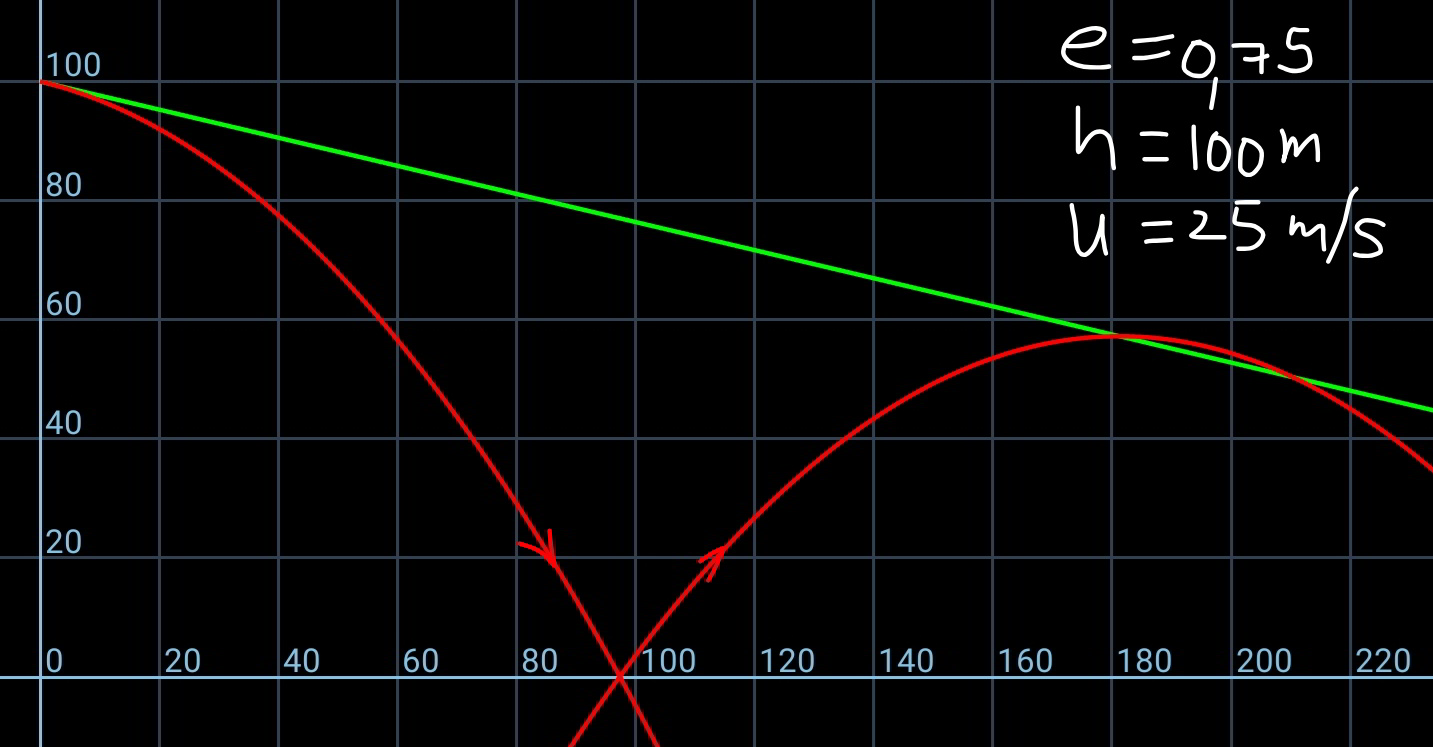
Commented by mr W last updated on 18/Feb/20
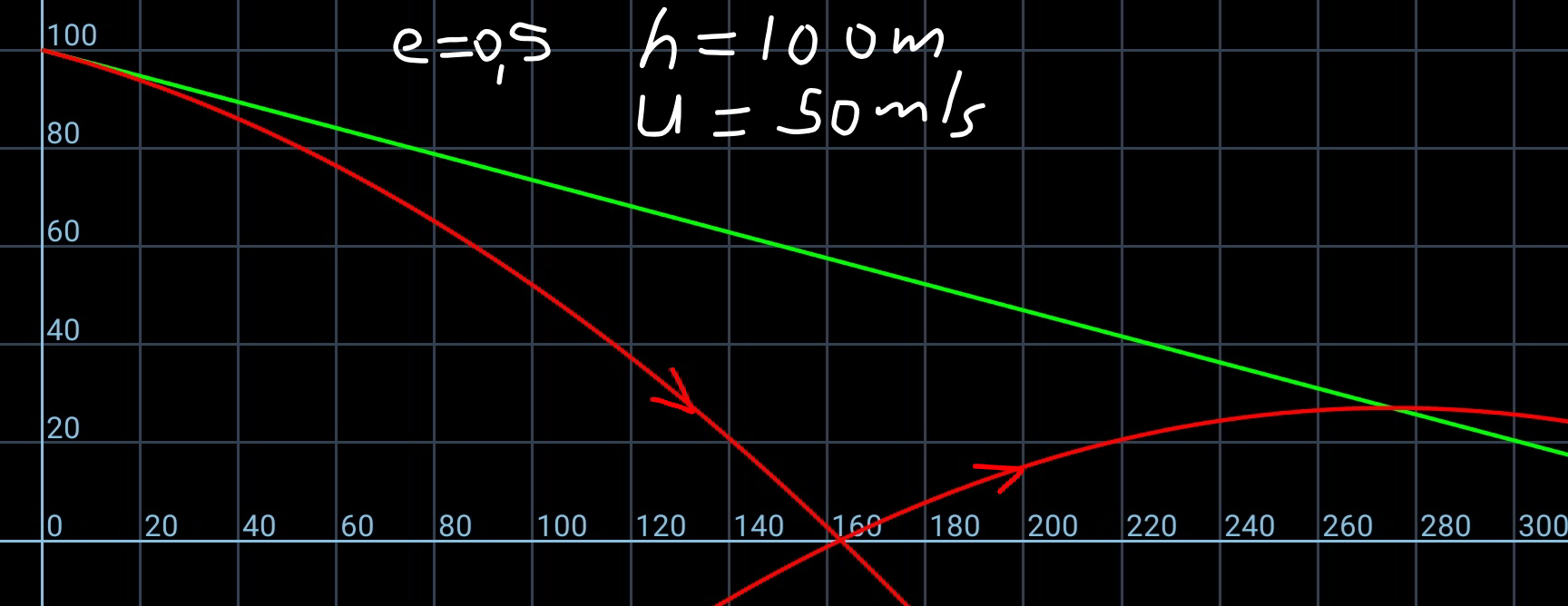
Commented by mr W last updated on 18/Feb/20
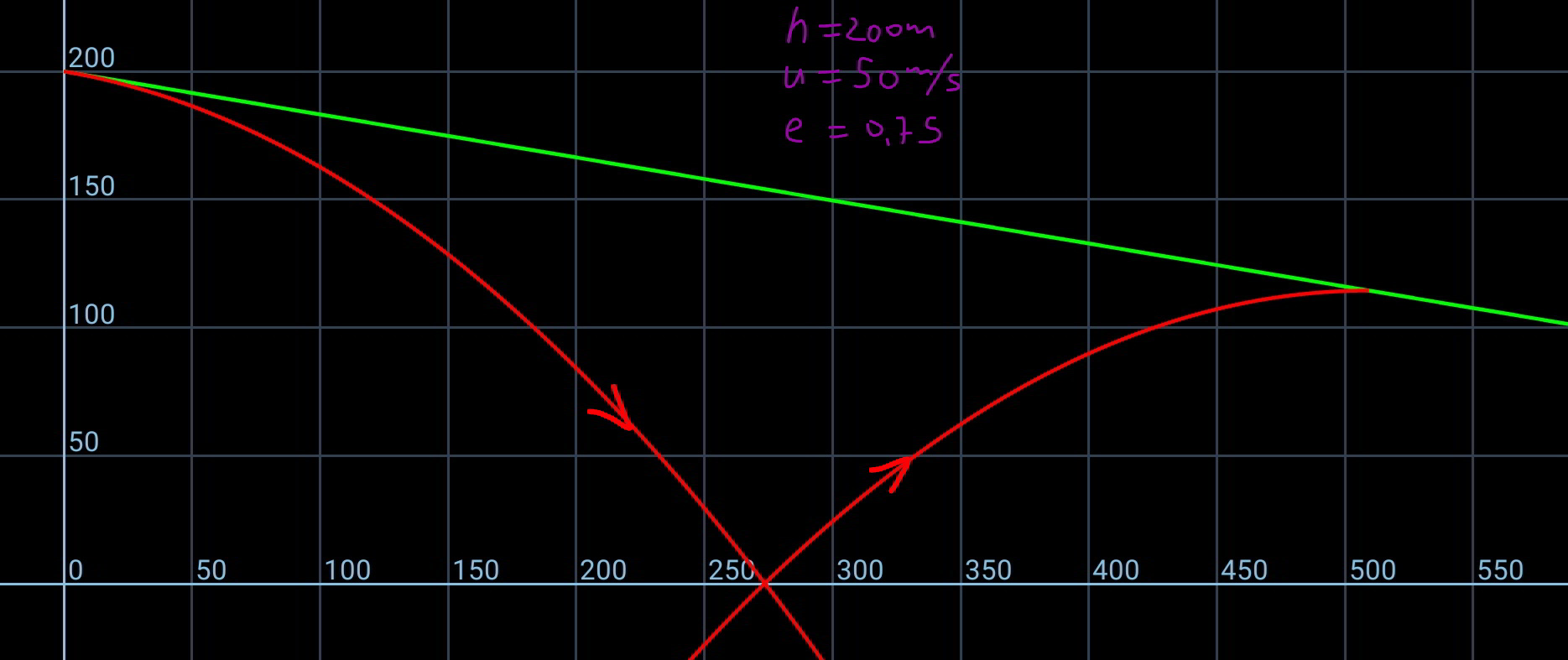
Answered by ajfour last updated on 18/Feb/20

Commented by ajfour last updated on 18/Feb/20

Commented by mr W last updated on 18/Feb/20

